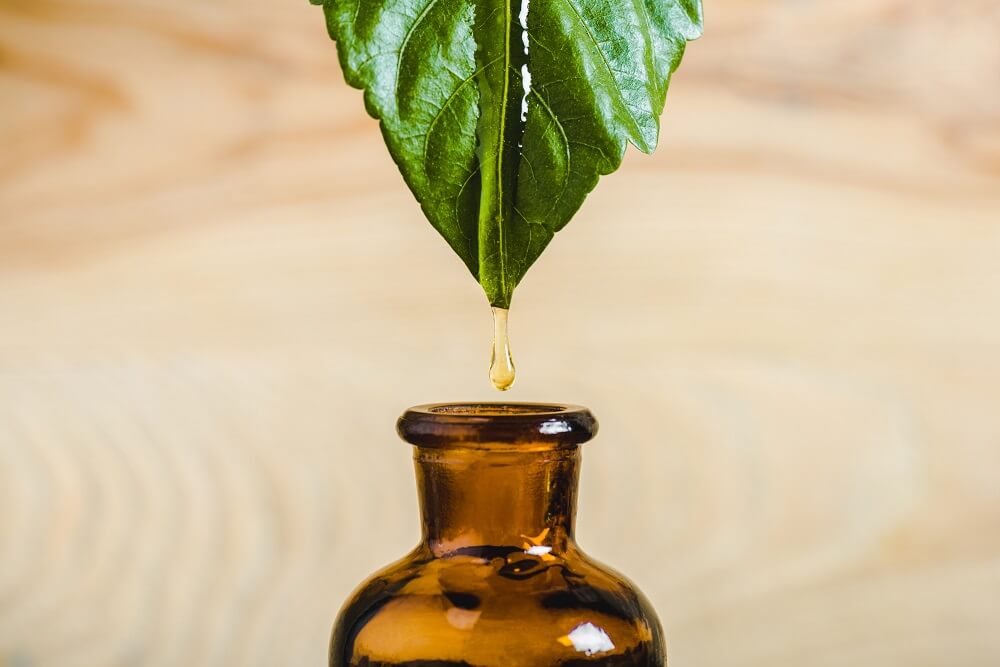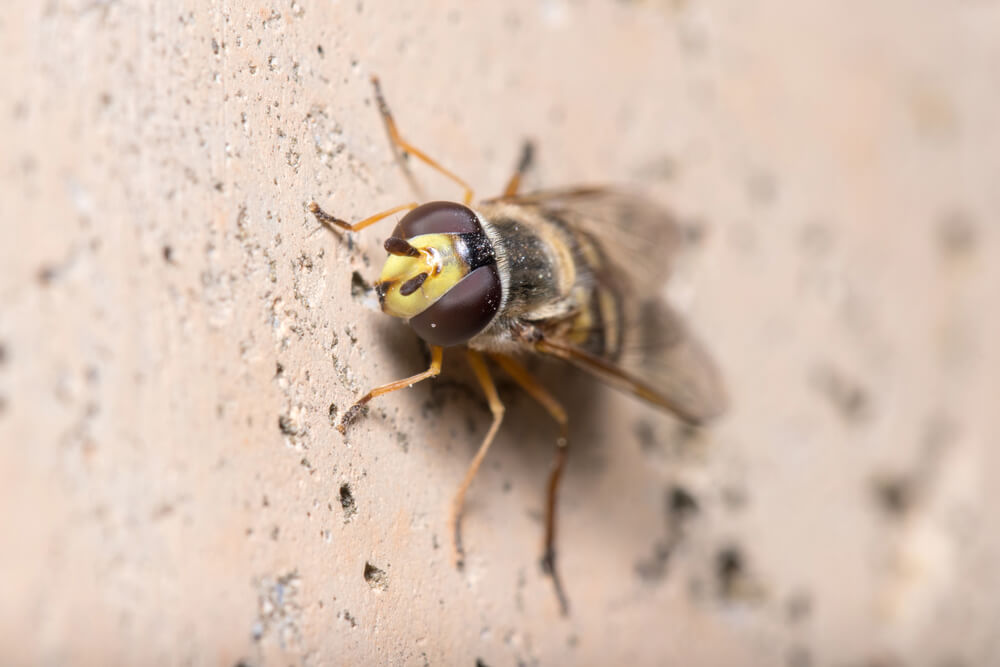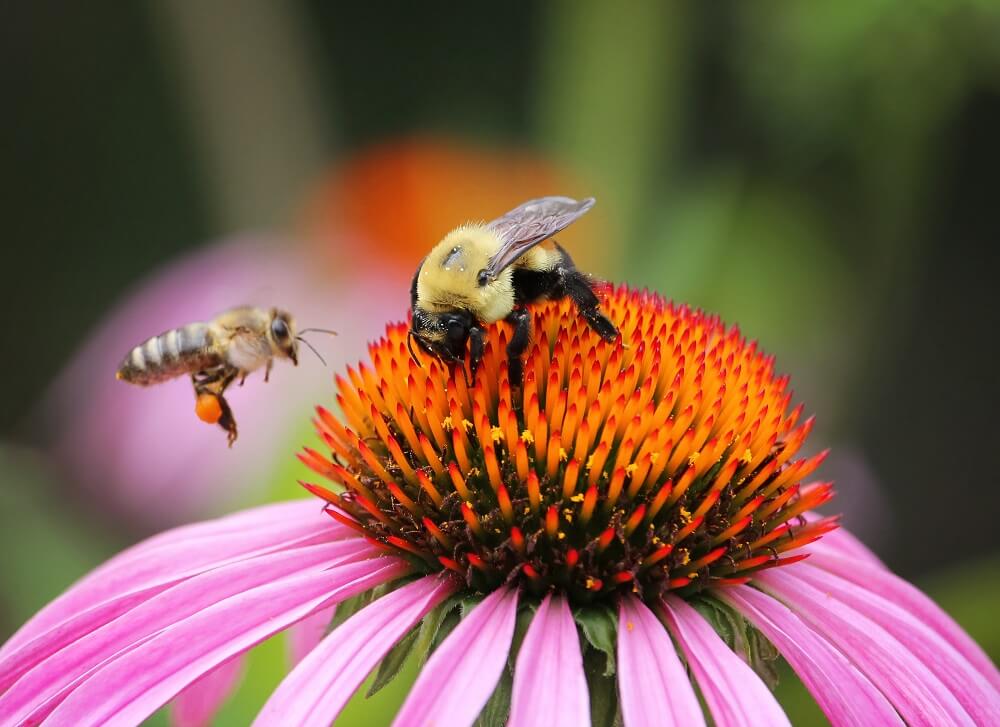Table of Contents:
The 3 Best Essential Oils for Bee Stings:
1. Top Pick: Tea Tree Oil
Tea tree oil is a powerful treatment for bee stings and other wounds. It’s been used for medicinal purposes for centuries because it’s antibacterial, anti-inflammatory, and antifungal. Since it’s backed by years of scientific research, it’s our number one pick for the treatment of bee stings.
2. Second Pick: Lavender Oil
Lavender oil is a popular oil that’s used to reduce inflammation and soothe the skin. It’s anti-inflammatory and antifungal which makes it an effective treatment for bee stings. Unlike many essential oils, lavender oil can be applied directly to the skin without dilution.
3. Third Pick: Lemongrass Oil
Lemongrass oil has been shown to be anti-inflammatory, antibacterial, and antifungal. Inflammation is a primary source of pain following bee stings. So by reducing inflammation, lemongrass oil can make bee stings less painful.
1. Tea Tree Oil

When it comes to treating bee stings with essential oils, tea tree oil is the clear winner.
How come?
Because it has powerful healing benefits due to its antibacterial, antiviral, and antifungal properties. This means it can relieve your bee sting by reducing redness, irritation, and swelling.(1, 2, 3)
More importantly:
Tea tree oil can also be used for more than just bee stings. This includes the treatment of dandruff, acne, athlete’s foot, and eczema.
And if that isn’t enough, tea tree oil has shown to be:
- Anti-inflammatory: In one study, tea tree oil decreased symptoms of skin allergic reactions by 40%, which is significantly more than standard medications.(4)
- Antimicrobial: Tea tree oil has antimicrobial properties which can kill infectious bacteria and stop the spread of itchy patches on the skin.(5)
- Anti-bacterial: Tea tree oil can treat and disinfect minor cuts and wounds by killing S. aureus and other bacteria known to cause infections.(6)
- Antiviral: Tea tree oil’s antiviral abilities can decrease the chances of an infection developing in cases where skin is broken.(7)
- Antioxidant: Tea tree oil has antioxidants that can protect against free radicals. It can prevent further skin damage that leads to scars.(8)
- Antifungal: Tea tree oil’s antifungal abilities can help decrease the resilience of certain yeasts, like those which cause itching, dandruff, and seborrheic dermatitis.(9)
- Antiseptic: Tea tree oil’s key antiseptic agent is terpinen. It works to stop microorganism growth (bacteria, viruses, or fungi) that cause irritation and inflammation.(10)
2. Lavender Oil

Lavender oil is a popular oil for treating bee stings.
And the good news?
Unlike most other essential oils, lavender oil can be applied directly to bee stings without a carrier oil. It has soothing properties that can reduce pain and itching.
A few benefits of lavender oil include:
- Wound healing: Lavender oil has been shown to speed up the wound-healing process if applied topically. It promotes the healing of the skin tissue.(11)
- Anti-inflammatory: The beta-caryophyllene in the oil also acts as a natural anti-inflammatory agent.(12)
- Antifungal: Lavender oil has shown to be effective at combating antifungal-resistant infections. It works by destroying the membranes of fungal cells.(13)
3. Lemongrass Oil

Lemongrass is a tropical plant used in food and herbal medicine. Lemongrass oil comes from the leaves and stalks of the lemongrass plant and has a strong citrus scent.
It’s been shown to have anti-inflammatory properties that can reduce pain and itching. Inflammation is a primary source of pain following bee stings. By reducing inflammation, lemongrass oil can make the bee sting less painful.(14)
A few benefits of lemongrass oil include:
- Antibacterial: Lemongrass oil has been found effective against various drug-resistant bacteria, including those that cause blood infections, skin infections, and pneumonia.(15)
- Antifungal: Lemongrass oil is a successful deterrent against four types of fungi. More specifically, fungi that can lead to athlete’s foot, ringworm, and jock itch.(16)
- Anti-inflammatory: Lemongrass contains citral, which is an anti-inflammatory compound. It’s shown to effectively treat mice with carrageenan-induced paw edema. When applied topically on mice with ear edema, the oil also had anti-inflammatory effects.(17)
- Antioxidant: Lemongrass oil has antioxidant properties that can help protect against free radicals. According to one study, lemongrass oil mouthwash showed strong antioxidant compounds.(18)
How to Apply Essential Oils for Bee Stings

Step 1: Remove the Bee’s Stinger
If you’ve been stung by a honeybee, it’ll probably leave a stinger behind in your skin. This is because honeybees have barbed stingers that “hook” into your skin.
But this isn’t the case for every bee sting.
In fact, most bees actually have smooth stingers that don’t get left behind. Honeybees are the exception to this.
So if you’ve been stung by a honeybee, you’ll need to gently scrape the stinger out using your finger. You can also use a tool to scrape it out, such as a notecard, driver’s license, or spoon.
Remember:
Removing the stinger quickly will reduce the amount of venom that gets injected into your skin. Acting fast will help decrease the pain, redness, and irritation from bee stings.

Step 2: Dilute Your Oil with a Non-Comedogenic Carrier Oil
Essential oils are potent and can cause stinging or redness if applied directly to your skin. Thus, carrier oils dilute essential oils and “carry” them into your skin.
But don’t worry:
Diluting your essential oil with a carrier oil won’t decrease its effectiveness. Instead, it’ll help moisturize the area and reduce potential irritation.(19)
Dilution for adults:
- 15 drops of essential oil per 6 teaspoons of carrier oil(20)
Dilution for children:
- 3 to 6 drops of essential oil per 6 teaspoons of carrier oil(21)
And keep in mind:
We only recommend using non-comedogenic carrier oils. Non-comedogenic oils don’t clog your pores or lead to pimples.
Argan oil is our top pick because it has a rating of 0 on the non-comedogenic scale. This means that argan oil is unlikely to clog pores and cause acne. And apart from being hydrating, argan oil is a rich source of vitamins, minerals, and nutrients.

Step 3: Apply The Essential Oil to Your Bee Sting
After diluting, apply the essential oil directly to your bee sting using a cotton swab or your fingertips. Apply the oil up to three times per day and place a bandage over the bee sting if necessary.
Remember:
Keep pets or small children away from essential oils. They may be toxic if ingested in high amounts.
If the bee sting is on your scalp, apply the essential oil mixed with a carrier oil to your scalp. Allow it to sit for 20 minutes, then follow your regular hair washing routine.

FAQs About Essential Oils For Bee Stings
- What is the best essential oil to put on a bee sting?
- Can you put lavender oil on a bee sting?
- Is tea tree oil good for a bee sting?
- Does peppermint oil help bee stings?
- Can you use chamomile oil on a bee sting?
- Can you use rosemary oil on a bee sting?
- Can you use basil oil on a bee sting?
- How do you neutralize a bee sting?
What is the best essential oil to put on a bee sting?
People often ask:
What are the best essential oils for bee stings and swelling? How do you speed up the healing of a bee sting?
The truth is, you can use many types of essential oils to treat bee stings. Examples include peppermint oil, lavender oil, tea tree oil, and basil oil.
Our favorite essential oil for treating bee stings is tea tree oil. This is because it has powerful benefits that have been thoroughly studied. For example, tea tree oil is famous for its anti-itch, anti-swelling, and soothing abilities. It can also help prevent bacterial infections due to its antimicrobial properties.
This makes tea tree oil an excellent topical treatment for bee stings.
But that’s not all.
Tea tree oil can also fight numerous types of bug bites. This powerful oil can treat mosquito, tick, fire ant, spider, and even flea bites.
Simply dilute the oil with a carrier oil like argan oil. Carrier oils help reduce potential irritation caused by the potency of essential oils.
—> Go back to the FAQs on essential oils for bee stings
More to Explore:
Can you put lavender oil on a bee sting?
Yes, lavender oil has been shown effective in treating bee stings. It’s an excellent oil to have on hand since many people use it for its soothing properties.
The advantage of using lavender oil to treat bee stings is that it doesn’t need a carrier oil. You can apply it directly to your skin using your fingertips or a cotton swab. Massage it in for a few seconds and wrap the area with a bandage, if necessary.
Like chamomile, lavender oil will help soothe the bee sting and relieve pain. It’s been shown to have anti-inflammatory effects on a cellular level which can help relieve many types of insect-inflicted wounds such as ant bites or spider bites.
—> Go back to the FAQs on essential oils for bee stings
More to Explore:
Is tea tree oil good for a bee sting?
Yes. As mentioned, tea tree oil has been used for medicinal purposes for centuries. It’s been widely studied and comes with scientifically backed benefits. It’s also inexpensive, which makes it a smart choice.
Besides preventing infection, tea tree oil can also promote wound healing. Research shows that tee tree oil can reduce inflammation and trigger white blood cells that aid in the healing process.(22)
Also, tea tree oil is famous for its antifungal, antibacterial, and antioxidant properties. These properties help reduce inflammation and enhance healing.
Using tea tree oil for bee stings is easy. Simply mix a few drops of the essential oil with a carrier oil like argan oil. Then apply it directly to the bee sting, massaging it in for a few seconds. You can apply it with a cotton swab or use your fingertips.
Apply the oil up to three times per day until the inflammation subsides.
—> Go back to the FAQs on essential oils for bee stings
More to Explore:
Does peppermint oil help bee stings?
People regularly ask, “Is peppermint oil good for itching?”
Yes, peppermint oil effectively heals bee sting pain because the cooling sensation provides relief from itching and irritation. Other mint oils, such as spearmint oil, also provide cooling relief.
The bonus to mint oils is that they can also act as insect repellents to prevent stings or bites.
Because of the strong smell and potency, we recommend diluting mint oils with a carrier oil before applying. Carrier oils are a great way to reduce potential irritation caused by essential oils.
Remember that essential oils are potent, and a little goes a long way. We also recommend doing a patch test before applying essential oils to a large skin area.
—> Go back to the FAQs on essential oils for bee stings
More to Explore:
Can you use chamomile oil on a bee sting?
Yes, chamomile oil is soothing and can reduce irritation from bee stings. Chamomile is generally considered safe and gentle, so it’s added to many skincare and haircare products.
With bee stings, chamomile helps reduce swelling and redness. Chamomile comes from a flower and contains compounds that have anti-inflammatory effects.
In fact, one study compared chamomile to a 1 percent hydrocortisone cream for skin irritation. It helped irritation heal much faster while reducing pain, inflammation, and itching.
To use chamomile for bee stings, mix a few drops of chamomile oil with a carrier oil and apply directly to the skin.(23)
—> Go back to the FAQs on essential oils for bee stings
More to Explore:
- Do Carpenter Bees Pollinate?
- How Long Do Bumble Bees Live?
- Honeybees vs. Bumblebees: How Do They Compare?
Can you use rosemary oil on a bee sting?
Yes. Rosemary oil is another solid choice for bee sting relief. It’s anti-inflammatory and can help prevent infections. That said, rosemary oil is very potent, so it should be mixed with a carrier oil before use.
—> Go back to the FAQs on essential oils for bee stings
More to Explore:
Can you use basil oil on a bee sting?
Yes, basil oil is a good choice because it’s gentle and anti-inflammatory. As a result, basil oil can help reduce irritation and speed up wound healing.
The oil’s antiviral effects prevent infection. It is especially beneficial for bee stings because of its antimicrobial properties.
—> Go back to the FAQs on essential oils for bee stings
More to Explore:
How do you neutralize a bee sting?
There are a few ways to neutralize a bee sting. The most common way is to use a mixture of baking soda and water. Mix one teaspoon of baking soda with two teaspoons of warm water. Apply the paste to the bee sting and let it sit for 15 minutes. Rinse well when finished.
From there, you can apply specific essential oils for bee stings like tea tree oil or lavender oil. This can help reduce pain, redness, swelling, and itching.





